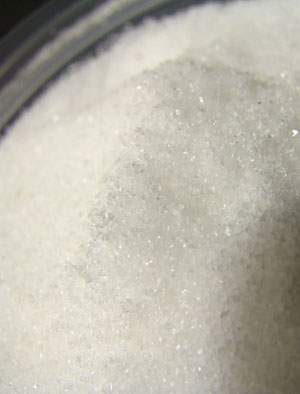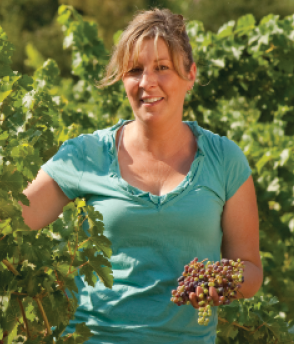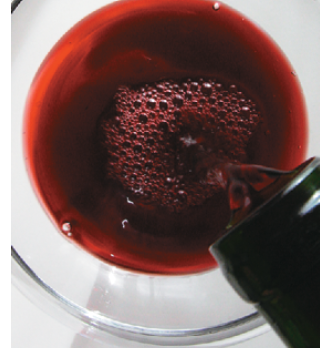
For the most part, winemaking is relatively simple, unless you run into some serious problem. But occasionally it does throw a curve ball at you with, for example, an acid level that’s just not to your liking. And this happens more often than not when making wine from grapes or fresh juice. Mother Nature can only work so hard to deliver a perfectly balanced harvest of wine grapes.
Then you’re left hanging at the crusher or press wondering if you should make any adjustments, and at what point. If you consider the pH as an additional factor which will likely change if you have to adjust acidity, the changes that will happen during the alcoholic (AF) and malolactic (MLF) fermentations and tartrate (cold) stabilization, you’ll have a case of winemaker’s anxiety. And to add to that, you’re just not quite sure what (total acidity) number you should shoot for.
Here, we take a closer look at acidity in juice and wine, understand what happens to the different acid components throughout winemaking, how to predict acidity changes, and how to use all that data to determine when and how to make adjustments if and when they are needed.
Note: The notation g/L is used in this column to quantify total acidity. 1 g/L is equivalent to 0.1% wt/vol.
Wine acid chemistry: A review
Grape juice contains several naturally occurring organic acids. Tartaric is by far the most significant in terms of type and concentration. It is found in very few fruits.
Malic acid, the major acid found in apples, is the second most significant in grapes, although its concentration can exceed that of tartaric acid in certain varieties or in terribly bad vintages. It has a sharp taste that can make wine taste unappealingly sour when excessive or poorly balanced with other components.
Citric acid, the major acid found in citrus fruits, is more sour tasting than tartaric and malic acid, however, it is present in small quantities.
And there is always some very small amount of acetic acid, yes, vinegar, which actually contributes to aroma complexity. But it can become significant in damaged grapes, such as moldy fruit or fruit damaged by insects and pests, and spoil wine.
There is also a multitude of other organic acids, such as oxalic, fumaric, phenolic, amino, and fatty acids. Many will not or only marginally contribute to acidity or pH as they exist in minute amounts or because their dissociation into ions (the process that contributes to the acidic content of a solution) occurs above wine pH range.
Carbonic and sulfurous acids are two inorganic acids of enological significance resulting from dissolved carbon dioxide (CO2) and from reactions resulting from the addition of sulfite.
All these acids combine to contribute to total acidity, which is more correctly termed total titratable acidity, or TA, in winemaking. Total acidity also includes those acids that have been neutralized by inorganic substances. TA is measured by titrating a sample with a base, usually sodium hydroxide (NaOH), of known concentration. This is a very simple procedure practiced by all winemakers.
That portion of TA consisting of volatile acids, such as acetic acid, called volatile acidity, or VA. Gluconic and glucuronic acids can be significant in wines made from Botrytized or moldy grapes and these acids also contribute to VA. VA is measured by first separating out the volatile fraction from the sample using a Cash still, and the distillate is then titrated as done for TA. This involves the use of specialized labware and advanced techniques that are out of the realm of home winemaking.
During AF, acids undergo changes and so TA and pH also change, though predicting the impacts with any kind of certainty is difficult. The impacts depend on many factors, including the yeast strain used, relative concentrations of these acids, pH, and mineral content (e.g., potassium).
The most significant change in acid content is due to the production of succinic acid. Succinic acid levels can elevate in the order of 1 g/L but can be greater with bayanus strains. Excessive levels can impart overly salty, bitter tastes.
With some yeast strains, malic acid may also become metabolized into lactic acid — this is not an MLF-type of reaction. But in red winemaking and with very few white varieties, namely Chardonnay, malic acid is purposely converted into the softer lactic acid — the acid found in dairy products — by MLF using lactic acid bacteria (LAB) containing specialized enzymes able to carry out this reaction.
Another significant change in the acid content is the result of reduction in tartaric acid content when wine is stabilized against the effects of cold temperatures. This depends on potassium content, and the extent of stabilization as well as potassium and bitartrate interactions with phenolic and sulfate complexes and proteins. Reds are not subjected to tartrate stabilization to the same extent as whites; drops are much smaller. Phenolic compounds act as protective colloids, but as wine ages, phenolic compounds polymerize therefore reducing their protective effect and making the wine increasingly less tartrate-stable over time.
There are a myriad of other changes in acids that can occur under abnormal or spoilage conditions, such as the bacterial conversion of citric acid into acetic acid in poorly managed MLF, or the oxidation of tartaric acid into glyoxylic acid when wine is excessively exposed to light.
Planning your acidity adjustments
Planning and making acidity adjustments is where art usurps science, where, instead of shooting for specific TA targets, we must rely on our taste experience and our ability to predict and quantify changes in TA that will occur to create that well-balanced wine.
So how do we do this? First, unless the TA is completely out of range for your desired wine style, it is best not to make any adjustments. Typical ranges are 7–9 g/L for whites and 6–8 g/L for reds. TA in finished wine will be lower. And if you are making an off-dry or sweeter wine, you’ll want higher acidity to balance sweetness. Remember: These are just guidelines.
Next, try to predict TA changes for your winemaking (discussed in the next section), and make the required adjustments before fermentation, not after, to let the acids “blend” in. Minor adjustments can be made in the wine.
Additions to increase TA are simple: Tartaric acid is the acid of choice. The addition of 1 g/L results in a TA increase of 1 g/L. But tartaric has become expensive and so some home winemakers now opt to add an acid blend consisting of some combination of tartaric, malic, and citric acid. The relative amounts of each is usually not known, and so, the addition of 1 g/L of blend does not result in a TA increase of 1 g/L. There is a bit of guesswork involved here. And the type of malic acid used in blends does not get metabolized by yeasts or bacteria. Citric acid is the bigger issue because it does get metabolized by LAB and turned into acetic acid and increase VA. For this reason, avoid adding citric acid for any winemaking involving MLF, while being sure to always use sulfite judiciously to keep rogue LAB in check.
A straight deacidification by reducing tartaric acid content can easily be accomplished using carbonate salts. You will need 0.67 g/L of potassium bicarbonate or 0.92 g/L of potassium carbonate for every 1 g/L drop of TA needed, added by first dissolving the salt in a small volume of water. Calcium carbonate is not recommended as it can add an unappealing earthy taste.
Predicting acidity changes
Predicting TA changes in winemaking so that the final TA is as close as possible to what you want it to be is a challenging exercise — there are so many factors, as described earlier. The following are some guidelines.
Expect an increase in the order of 1–2 g/L following AF. Then, for most whites, expect a decrease in the order of 1–1.5 g/L following tartrate stabilization depending on potassium content and the extent of stabilization. Most reds are put through MLF where you can expect a drop of about 1–2 g/L depending on malic content. For whites, such as a full-bodied, oak-aged Chardonnay, which will be both tartrate stabilized and ML fermented, the TA drop is cumulative.
Notice how changes always “depend” on multiple factors, hence the challenge. Quantifying potassium and malic contents are well beyond the scope of most amateur winemakers. But we can estimate crudely the amount of malic acid and get some sense of potassium content.
A crude method if you are already accustomed to doing paper chromatography tests is to ballpark malic content by comparing relative spot sizes. For example, if your TA is 6.0 g/L and your malic spot is about three-quarters the size of the tartaric spot, and assuming that these are the only acids, you can estimate roughly 3.4 g/L of tartaric and 2.6 g/L of malic acid. (At best, if you want to get a touch more accurate, then you can factor in that malic acid is about 90% the equivalent weight of tartaric acid, the standard used in TA measurements).
Another method I have learned from wine chemistry guru Clark Smith is to perform a freezer test. This test attempts to parse out the tartaric acid from the malic acid.
First prepare a 100 g/L tartaric acid solution. Measure the TA of your juice sample. Using a 100-mL juice sample, monitor the pH (using a pH meter) and incrementally add the tartaric acid solution until the juice reaches a pH of 3.6–3.7, the peak of the bitartrate curve, i.e., the point at which bitartrate, a form of tartaric acid, becomes the most prevalent in the solution. The idea is to get maximum bitartrate concentration to hasten and optimize precipitation.
Transfer the sample to a 250-mL flask, stopper, and place in the freezer overnight. Transfer the sample from the freezer to the refrigerator to let the sample thaw. Once thawed, there will be tartrate crystals at the bottom of the flask. Transfer, or preferably, filter the sample to a beaker to separate out the crystals. Measure the TA of that sample. A large TA drop, for example, more than 2 g/L, means that the juice has high potassium content, owing to the relatively higher amount of tartaric acid; otherwise, high TA is likely due to high malic acid content. Let’s look at an example from somewhat of a problem juice — high TA and high pH.
Consider a must with 9.0 g/L TA and pH of 3.90. The must would require perhaps 3 g/L to get the pH down to approximately 3.6. The TA would then reach 12 g/L. Following the freeze and thaw, if the must has high potassium and high tartaric acid content, TA should drop by approximately 4 g/L down to 8.0 and the pH would remain at 3.6. If the problem is high malic acid, TA would only drop by 1 g/L, perhaps 2 g/L, down to around 10–11 g/L. The must would therefore require a deacidification procedure that specifically targets malic acid, with some reduction in tartaric acid too, such as by double-salt precipitation (the topic of the “Techniques” column in the October-November 2010 issue). Only doing an MLF and at 100% may excessively reduce TA down to some level that would make the wine flat.
Studies vary as to the amount of malic acid decrease required for a specific drop in TA. Some suggest that approximately 3 g/L of malic acid would need to be converted for a TA drop of 1 g/L while others have shown that TA changes depend on wine pH, with 3.4 being the focal point. TA was shown to drop by 1 g/L in wine pH range, except at a pH around 3.4 where it dropped by 2.0 g/L.
Let your taste buds guide you
It is worth repeating: Do not let the numbers decide your winemaking, but rather, use them as a guide, and always rely on your palate to determine what you like best.
And do take the time to do bench trials tweaking sugar levels to balance acidity or, if absolutely needed, making acidity adjustments. Remember: The goal is achieving balance — balance that your palate will like.







